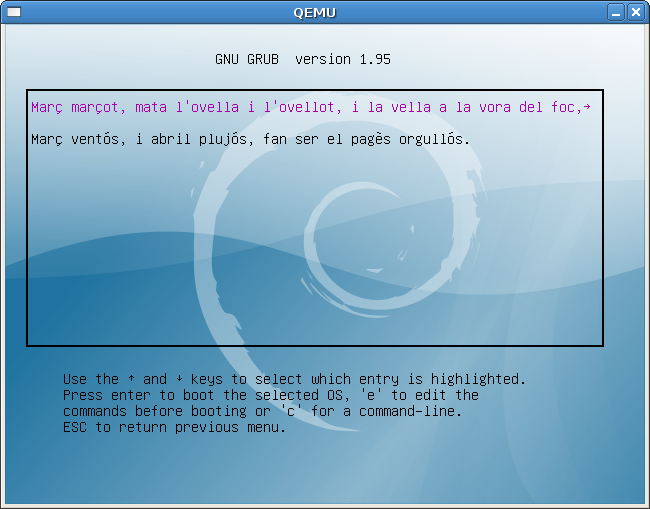As Josep asks for it every now and then, and we really enjoyed this trip, it's time to write about the four days we spent cycling from Ripoll to Girona, through the Ruta del Carrilet, a Catalan via verda similar to the one we completed a year ago.
I spent this year's 9 d'Octubre cycling trip with totally different trip mates, not related to my triathlon team. The extensive group was formed by Sabri, Mar, Bàrbara, Carles, Desi, Adela, Núria, Amador and myself. We started our journey by car from València to Mollet de Mar, where we parked the cars and take a regional train to Ripoll with our bikes, where the real journey would start.
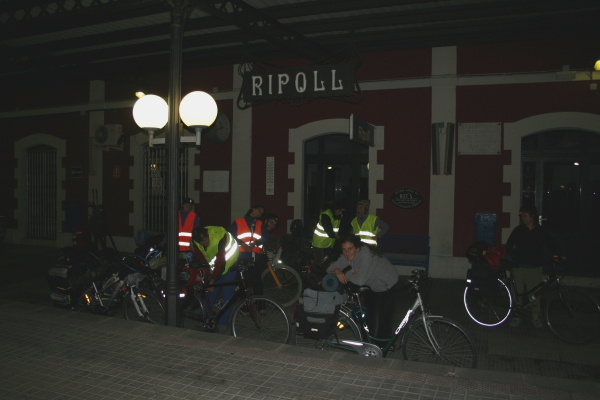
Arrival at Ripoll
When we got to Ripoll, it was quite late and dark, but we managed to find the start of the Ruta del Ferro rail trail which would take us to Sant Joan de les Abadesses. It was quite cold, but especially really humid, so we had to think twice before settling on a place to camp and setup our tents. We had to take special care of covering the bicycles as the air was really wet, and anything we left uncovered would appear soaking next morning. In part, my shoes suffered from this.
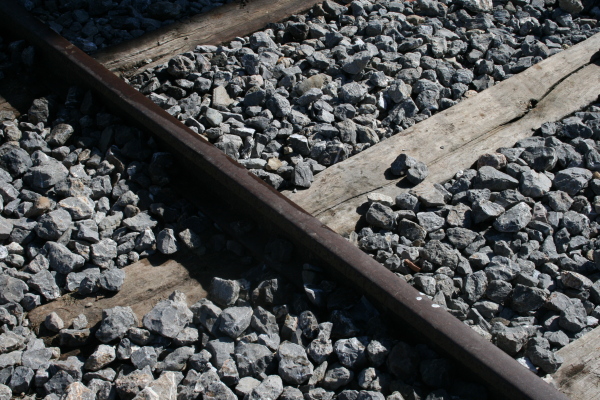
Early next morning we had breakfast on the wet grass and then started our way to Sant Joan through a deliciously well equipped and maintained cycling track, which unfortunately only lasts for 12 kilometres through a splendind landscape. After having breakfast in the old railway station in Sant Joan, we abandoned the Ruta del Ferro to take a road to Olot via Sant Pau de Seguries, where we had to climb a small mountain and then descend through the Vall de Bianya until we got to Olot.
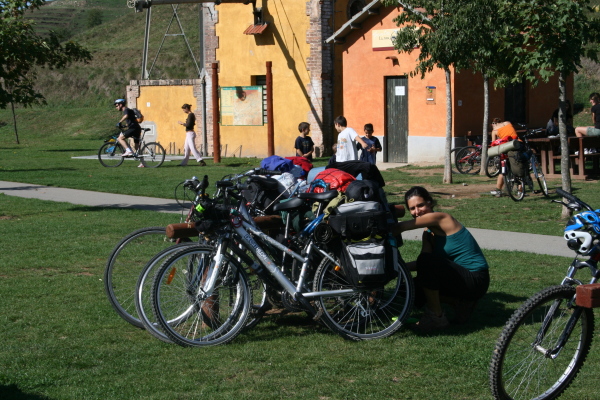
Sant Joan de les Abadesses' railway station
Asking the locals for the start of the Ruta del Carrilet was fun due to the strong oriental accent in the area and we sometimes wouldn't get a word of what we were told. An old man recommended us finding a big park in the outskirts of the town, where we prepared our entrepans for lunch, and after a little rest, we started cycling up the Carrilet, which would take us to Girona in two stages. This Catalan area is of volcanic origin, and there are several natural parks dedicated to the phenomenon. There are many mountains covered with forests and impossible peak shapes, which due to the time of the year were starting to go from green to brown and yellow, making fantastic colour schemes in the landscape.
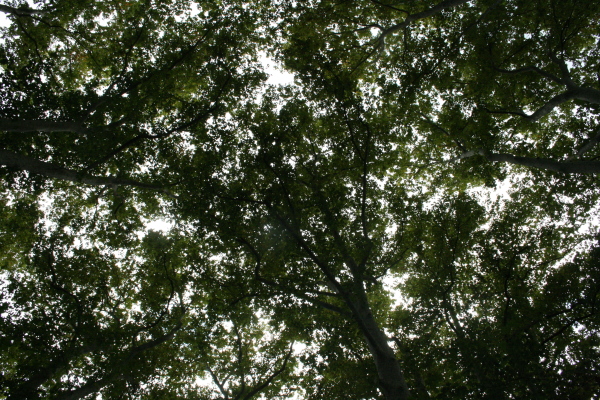
Under a green ceiling in Olot
Just after the few first kilometres, the railroad track starts to descend most of the way, which makes it easy for people who aren't too trained, and easier to enjoy your way chatting with people while you cycle. As we consumed the daylight, we came across a parish church party with lots of old and young people from the nearby town of Sant Miquel de Pineda. Amador and I were lagging behind a bit at that point, and when we got there, we found the rest of the group were already off their bikes and either having a curious look over the party, or directly following suit and dancing like the others. We had a peek into the small church and also into a small graveyard in the back, where I was surprised to find the “enemies” of my Catalan grandmother: «Família Matabosch», as one of the headstones revealed.
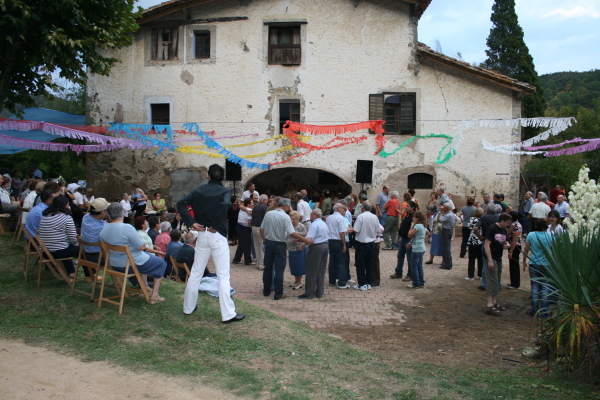
Partying at Sant Miquel de Pineda
As it was getting late, we eventually started off again, but luckily Bàrbara spotted what seemed a good sleeping place for that night. To the right of the trail there was a hermitage (devoted to Santa Cecília) up on the hill which, for bonus points, had a porch with a recently renewed roof which would help cover ourselves from humidity and rain, as we found soon after starting cooking dinner.
While the cooks prepared our soup, some others went down to the Carrilet in order to find out if the next town was close so we could get some driking water for the dinner. Luckily, Sant Feliu was close enough, and we found a bar where we got some water... and two bottles of wine, which made some people back at the hermitage very happy. We were quite tired though, so we eventually went to sleep after reading some stories from a great tale book, with the sound of rain hitting the grass outside the porch.
The rain was still with us when we started waking up, so we had breakfast and packed our stuff very slowly, in an attempt to avoid getting wet. But rain didn't stop, so we made a few hacks on our bicycle bagpacks to minimise the amount of rain wetting them. When we were finally ready to set off and had cycled around 3 kilometres under the light rain, it finally stopped raining, making the rest of the journey very pleasant.
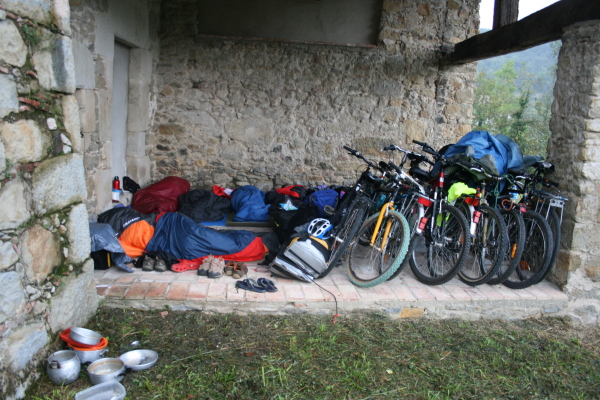
Sleeping under the porch of Santa Cecília's hermitage
This part of the route is again quite beautiful, with impressive amounts of green vegetation at both sides of the track. There's a lot of water presence in the land, which makes the type of trees and bushes quite different to the ones we are used to find in the Valencian Country.
After going by a few small towns, we arrived in the old railway station of Amer, hometown of the Puigdemonts. Even if it was a bit early, we decided to have lunch there, so a few of us went down to the centre of the town to buy bread and some other details to eat. Being in my friend Josep's town for the first time, I wanted to visit his family's bakery, but unfortunately it is closed on Mondays. We had lunch back at the cute station, and eventually kept going on our way to Girona. Outside Amer, the Carrilet was temporarily cut by the road, and there were two possible alternatives: using the road, with heavy lorry traffic, or diverting through a very steep track with very hard slopes. Most of the group preferred the road, but Mar, Amador and I went up that track, which was hard to climb and really fun to descend. Apparently, Amer locals call those 1.5 kilometres the “Tourmalet”. It's probably not so bad, though. :)
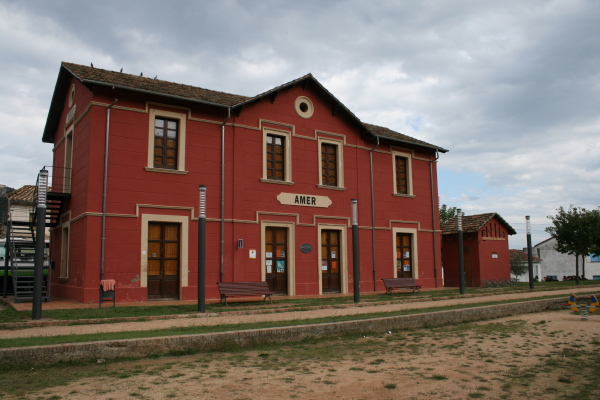
Amer's railway station
Unfortunately, the Ruta del Carrilet starts getting uglier after Amer, and as you approach the more industrialised towns near the capital Girona. The area around Anglès wasn't that fun, with the track continuously being invaded by cars and other vehicles. Soon after we were in the farmland area surrounding Girona and its Devesa.
Jonathan was waiting for us in the city, after his two month stay in Scotland, and we were all happy to meet him. We discarded continuing our way to the coast, which was the initial plan, and instead dropped our stuff in the house of one of Adela's friends, and went out to have dinner to a Wok restaurant, where the poor people running it suffered our childish behaviour involving the rotating central dish on our table and custard sucking contests.
Jonathan guided us through the Cathedal and city wall areas of the town centre, which are impressive, and we climbed all of the wall towers to have great looks over the dark and quiet city. Eventually, we went to sleep, as Adela had to leave early, and we had to pack to get our train back to Barcelona.
Back in Mollet, we cooked our last camping-gaz lunch in the park right next to the station, before noticing the place stinked of dog poo. After the careful operation of filling the three cars with 9 bicycles, we were finally on our way back to València, completing another great cycling journey. If you like bicycle tourism and can travel to this area in Catalonia, I highly recommend it, as there's many great places to visit, all of them accessible with bikes.
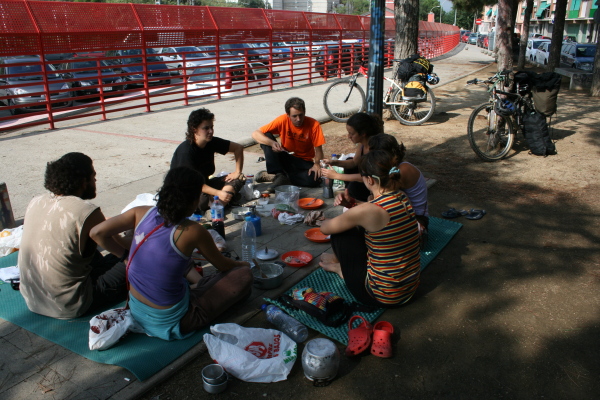
Having lunch in Mollet
